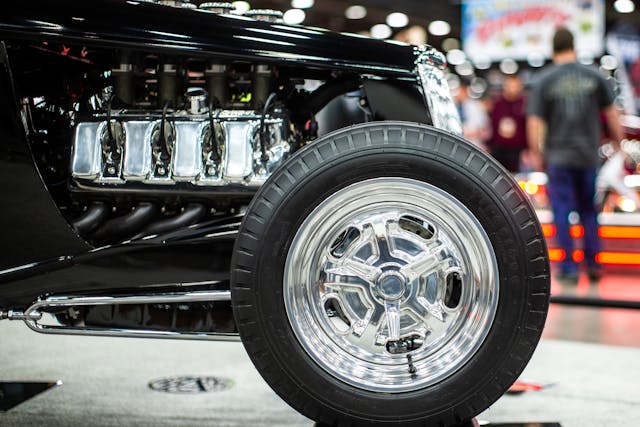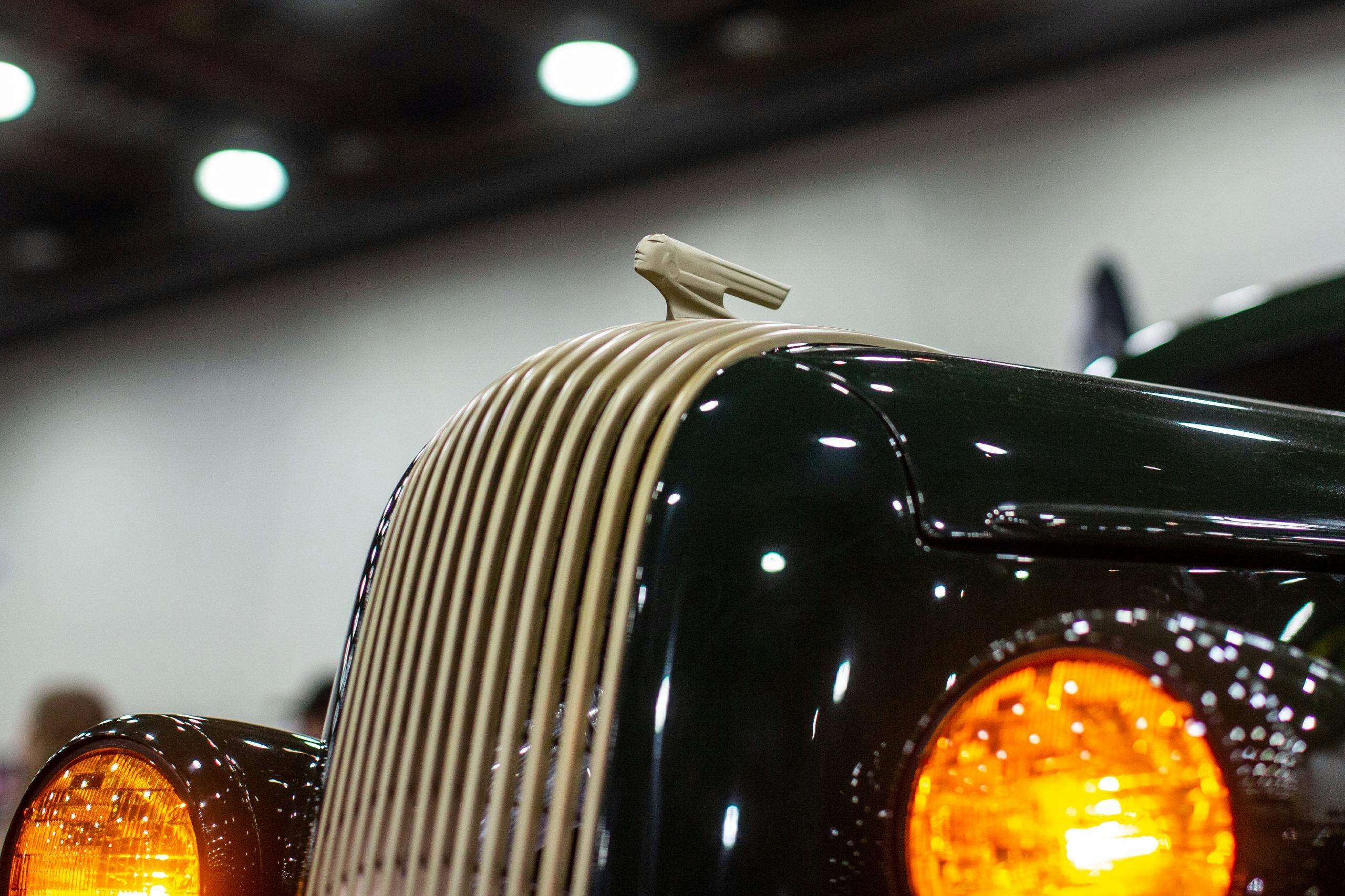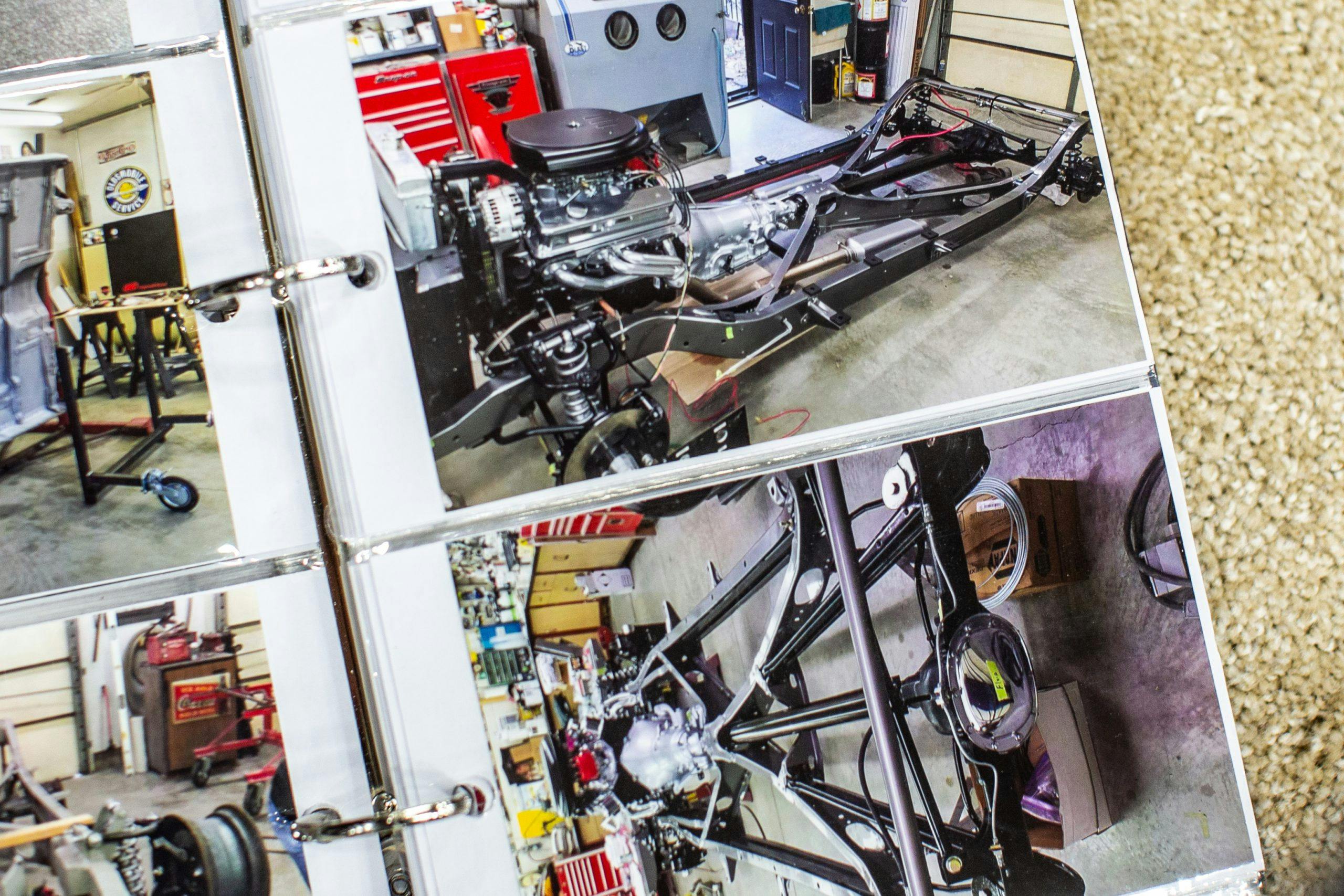Media | Articles
The Great 8: 2022 Ridler Award finalists
By now you’ve probably seen the outrageous “Sho Bird”, the radical custom 1931 Chevrolet Independence that won the Ridler Award at the 2022 Detroit Autorama. Even just based on the story’s comments it’s clear this year’s Ridler winner was a polarizing choice. For those unacquainted with the custom hot rod universe, here’s some perspective. Winning the Ridler Award at the annual Detroit Autorama is the custom world’s equivalent to winning Best of Show at the Pebble Beach concours. Being named one of the Ridler’s “Great 8” finalists is akin to a Pebble Best of Class ribbon. At both of those shows, winning those awards are considered great honors for the owners and builders, not to mention a serious boost in business for the latter.

Most cars that compete for the Ridler are “checkbook” customs. Often owners engage professional designers like Hagerty contributor Chip Foose or Murray Pfaff to draw renderings that are then provided to builders, who typically perform the body work and act like general contractors on a construction site. The builders bring in other businesses—subcontractors for things like upholstery, paint, and maybe the engine build or other mechanical work. As you might guess, pockets that are at least mid-six-figures deep are more or less essential to seriously compete for a Ridler Award. Many owners are successful operators of small- and medium-sized businesses. This year’s Ridler winner, for instance, owns a trucking company
From my personal perspective, the Sho Bird was a bit of an outlier when compared to the other Great 8 finalists. For lack of a better word, the other seven are “cleaner” designs than the ’31 Chevy. Nobody to whom I spoke at the Autorama thought that the Sho Bird would come out on top, because most of the talk centered on the most traditional of the finalists: a ’33 Ford highboy. My personal favorite was an old school, owner-built ’51 Oldsmobile rod, replete with a small block Chevy and Mustang II front end.
To let you decide on your own favorite, here are the remaining seven of the 2022 Detroit Autorama Great 8, sponsored by BASF coatings.
1933 Ford Roadster, owned by Don Snell

This ’33 Ford Roadster was shown by Don Snell, of Taylor, Michigan. A long-time show attendee, about six years ago Snell decided to make the financial commitment to try and win the Ridler. “I was very humbled when they brought the [Great 8] flag out this morning. It brought tears to my eyes.”
Marketplace
Buy and sell classics with confidence

Despite the name, Snell’s “Ford” roadster, never saw the inside of one of Henry’s factories. It’s based on a brand-new American Speed “33 Speed” body and a Roadster Shop frame, both heavily modified. The roadster is powered by a 520-cubic-inch, 780-hp, 610 lb-ft, example of John Kaase’s “Boss Nine” take on the legendary Boss 429 Ford engine (also known as the Shotgun Hemi). Power runs through a Tremec T56 six-speed manual transmission, and a Winners quick change 4.11:1 rear end.
To make room for that big-block engine and its massive heads and valve covers, the firewall has been pushed back three inches and the hood stretched. To get the stance and look just the way Snell wanted it, he lowered the grille and tapered the hood to match, but that put the bottom of the grille on the ground—so he had it shortened, rewelded and chromed by Advanced Plating, which did the rest of the chrome on the car, including the driveshaft. For more headroom, the floor has been dropped by two inches. The car has a custom 3-inch stainless steel exhaust. Each of the eight velocity stacks that poke through the hood and feed the fuel injection were hand-made. Snell describes it as “not professionally built” but rather assembled in his pole barn shop by him and a team of friends that have been building cars since they were kids.
2021 Devin Z, owned by Christopher Wright

Christopher Wright from St. Charles, Illinois, entered the Ridler competition with his PPG blue 2021 Devin Z roadster. Wright had the fully engineered car scratch-built as a modern day tribute to Bill Devin and the Corvette-based sports cars Devin built in California in the 1950s and ’60s. Devin used exclusively General Motors components, so Wright started with a 697-hp Bill Thompson LS7 V-8 engine with Holley EFI and a sidedraft Harrop intake manifold, driving through a six-speed Corvette transaxle from Getrag. SR3 supplied the custom tube chassis with independent suspension and disc brakes at all four corners. The 14-inch, six-piston brakes are by Wilwood. Holley also provided the ignition setup as well as its traction control and Digital Dash electronics. The custom wheels are by B-Forge with simulated knockoffs by Billet Specialties.
Wright had a body left over from his previous restoration of a 1957 Devin S, so using that body as a basis he added and carved foam until he was happy with the shape. That sculpture was handed off to Michigan’s Motor City Solutions, which used it to create a mold for the finished carbon-fiber body shell that weighs just 161 pounds. Most of the fabrication work was done by hand by Dave Daunheimer of Competition Fabrications. Most mechanical components are one-off parts made on CNC machines. The flawless finish body work, paint, and glass was done by D&M Corvettes. Riggs Brothers did the interior.
1936 Pontiac Two-door Sedan, owned by Glenn See
Glenn See from Greenback, Tennessee brought his very ’30s-gangster-ish 1936 Pontiac two-door sedan named Prohibition. It was painted in a rich green paint from DuPont, set off by bronze-colored, shot-blasted custom Schott wheels and trim. Built by The Garaj Mahal in Maryville, Tennessee, the Poncho is powered by a 1100-hp Borowski LS engine with a single 76-mm Bullseye turbocharger and a Holley HiRam intake manifold connected to the rear end via a BRE custom Hughes Performance GM 4L80e transmission. The turbo is fed by Hooker Wraparound headers. After leaving the turbo, twin chrome exhausts exit the rear of the car, but there’s also a cutout that routes the exhaust directly out of a very neat port that is flush mounted in the front fender behind the wheel. The frame is custom, by Scott’s, with what appears to be Corvette control arms up front, a four-link setup in back, and a very robust rear end to handle all of that power. Coilover shock absorbers are used all the way around. Pro Auto Custom Interiors did the upholstery. The car has hardwood floors and over 100 feet of custom stainless steel tubing. Over 6000 hours of labor went into body fabrication, preparation and paint.
1951 Studebaker Pickup, owned by Jim and Rhonda Sappenfield

Jim and Rhonda Sappenfields’ deep burgundy, slammed 1951 Studebaker pickup was one of the show favorites. The Sappenfields and U.S. 12 Speed & Custom, the shop that completed what was a 20-year project originally started by he late Gene Pierce of South Bend, are located in New Buffalo, Michigan, not very far from the South Bend, Indiana, factory where the pickup was made. The body has had some serious modifications, including a 5-inch chopped top, fenders widened by 4-inch, the bed shortened by a half foot, a ’49 Ford grille, and (to get that real low stance) the body has been channeled 10 inches over the frame. The full-custom interior by Vos Upholstery of Cedar Lake, Indiana, features a modified 1950 Plymouth dashboard.
1970 “Kryptonite” Dodge Challenger, owned by Kevin Tirpak
Kevin Tirpak’s 1970 Dodge Challenger, named “Kryptonite,” was built by his Ravenna, Ohio, shop, Altered Motion. Painted in a striking finish reminiscent of Dodge’s muscle car era Sub-Lime, it is powered by a Gen III Chrysler Hemi engine topped by a very large Whipple supercharger. While many Ridler finalists have drag racing aspirations, the Challenger’s deep front splitter, tall rear spoiler, slotted and drilled Baer brakes, and hefty roll cage make Kryptonite look ready for a road course. If the Ridler-winning ’31 Chevy offends your eyes, the clean lines of this Great 8 finalist should ease them.
1970 “Hyper Cuda” Plymouth Barracuda, owned by Don and Mary Doctor
Like the Challenger, the 1970 Plymouth Barracuda entered by Don and Mary Doctor of Denver, North Carolina is also powered by a supercharged GEN II Hemi mill, and like the ’36 Pontiac, it’s finished in green and matte bronze, albeit different shades. Built by Creations by Gemza, the Mopar, titled Hyper Cuda, was probably the tidiest car of the Ridler finalists. I’m sure it has scores of body modifications, but they’re subtle enough not to poke you in the eye. Speaking of subtlety, the ‘Cuda has very little brightwork and the bumpers are body-colored, so the polished chrome rings on the period evoking matte bronze knockoff wheels really pop. The custom chocolate brown leather interior looks delicious.
1950 Oldsmobile, owned by Dale Bernard
My personal favorite was an old-school hot rod 1950 Oldsmobile belonging to Dale Bernard of Cincinnati, Ohio—a car that he describes as “a 15-year part-time project built in my backyard body shop when I was slow with customer jobs.” Painted in a maroon that is so deep some posts online say it’s black, the flush-mounted C1 Corvette taillights fin the rear fenders, and an ersatz Corvette cove on the car’s side, explain why the display was festooned with the famous crossed-flags emblems.

It’s not that common for a self-built car to make the Great 8. Not only did Bernard build the car himself (with help, of course), instead of a LS and Tremec setup as you find in many high-end customs, it has an actual small-block Chevy V-8, in 350-cubic-inch form, naturally aspirated with Holley fuel injection, and a GM700 series automatic gearbox. It retains the original Oldsmobile X frame but it’s been modified to take a Mustang II front end with coilovers and a Chevy Blazer rear axle. Body mods include a 3.5-inch roof chop, molded drip rails, custom floor and trunk pan, and smoothed and stamped firewall with hand-built aprons. The body has been smoothed, nosed, and decked, the exterior handles have been shaved and the doors and trunk open electrically. The license plate retracts, modified ’55 Chevy rear and ’52 Chevy front bumpers have been fitted. There’s also flush0mounted glass, including a backlight made from a Saab’s front windshield, and ’55 Olds headlamp caps to give the car a “Frenched” look.
Also unlike a lot of Ridler competitors, which often have custom-designed and purpose-built wheels, Bernard bought the polished chrome nine-spoke wheels of the shelf at his local auto parts store. Perhaps my favorite touch is the front grille made up of ten 1948 Ford interior door handles, the hood release being one of them. The interior, by Sew Cool Custom Interiors is made entirely of parts custom made of wood, PVC, or hand-laid fiberglass, wrapped with leather. After earning a spot in the Great 8, I don’t think Dale’s shop is going to have much down time in the near future.
So these are the rest of the best: the seven finalists that didn’t win this year’s Ridler Award. Let us know in the comments below which one you would have chosen for the Ridler.






































































